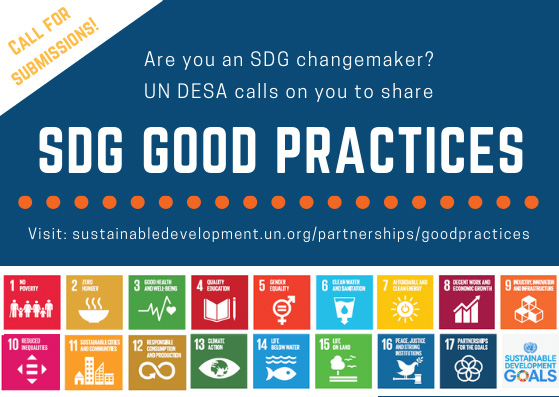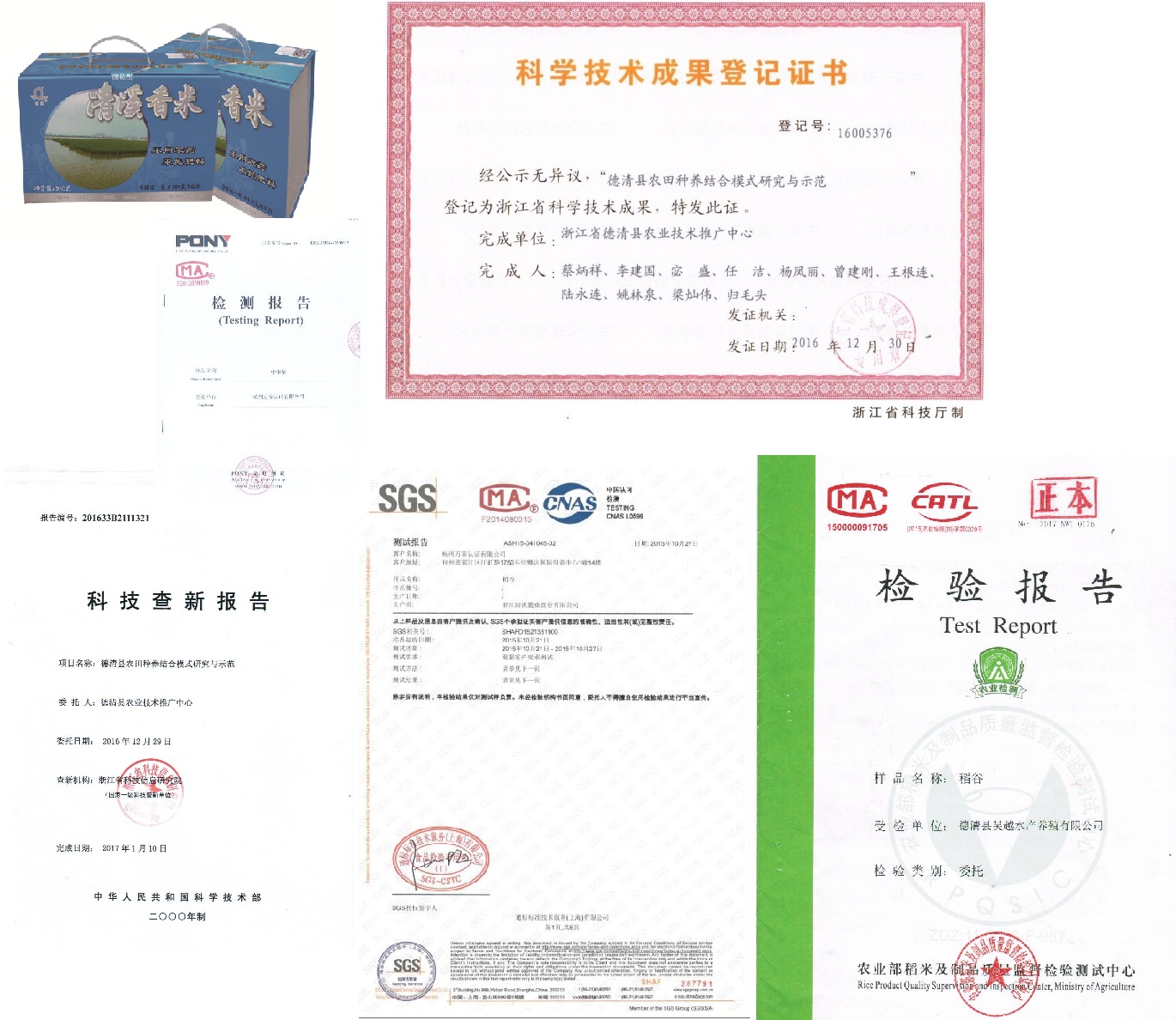Good Practice and Experience in SDG implementation: Deqing County’s Innovation in East China’s Yangtse River delta in Promoting Sustainable Agriculture and Food Security through Fish and Grain Symbiosis
Description
Since the 1990s, the agricultural sector reform and restructuring have brought about dramatic aquaculture production increases. When not managed sustainably, this growth threatened to aggravate land use conflict and increase the region's dependence on grain import. In this context, the county has been actively exploring a variety of fish-grain complex production models, of which the "turtle-rice symbiosis (rotation)" model is among the best examples. Starting with a series of innovative experiments, the practice(2011-2016)has made full use of the complementary effect between animals and plants, which proves to be an energy-saving, environmentally-friendly and sustainable agricultural model.
The practice aims at (i) finding innovative and sustainable solutions to the conflicting demands on land by freshwater aquaculture and grain production, (ii) further reducing the agricultural non-point source pollution, (iii) improving the quality of agricultural and aquatic products from the source, while increasing farmers’ income and contributing to environmental protection, healthy ecosystems, and food security as well.<br />
<br />
Since the industrial revolution, especially against the backdrop of intensive agricultural production, the application of chemical inputs and biotechnology has greatly increased the output of agriculture, which, however, relies more and more on chemical fertilizers and pesticides, leading to a series of protracted problems such as food safety, public health risks, environmental pollution, ecosystem imbalances, etc.<br />
Deqing County of east China’s Zhejiang Province is a highly developed region characterized by balanced strategy of traditional freshwater aquaculture, integrated with paddy fields totalling about 48,000 acres. Since the 1990s, with the adjustment of agricultural structure and the development of sustainable agriculture, freshwater aquaculture has gone through a continuous process of innovation, integrated with the paddy fields of the county (without destroying the tillage layer of the paddy fields, but only raising the ridges of the fields). The main cultivated varieties including freshwater shrimp, soft-shelled turtle (also known as Trionyx sinensis), snake head, mandarin fish, etc., had brought about remarkable economic benefits for the local farmers. The previous paddy field farming system has also been adjusted from three cropping to one cropping per year. <br />
<br />
On the other hand, outbreaks of diseases in paddy field aquaculture occurred, such as shrimp gill rot, soft shell diseases, viral diseases and so on, resulting in heavy losses of paddy field aquaculture. At the same time, farmers also had to deal with problems of agricultural water pollution, rising costs of inputs and aquatic product quality and food safety concerns.<br />
<br />
In order to meet the fish-grain land demand and to promote the sustainability of food production, a group of local agricultural scientists and technicians, including the head of Qingxi Soft-shelled Turtle Industry Co., Ltd. in Deqing County, Zhejiang Province, actively explored new types of agricultural production, and after many trials, adopted the innovative mode of "Turtle-rice symbiosis (rotation)" in their field work. Through this innovation, the county gradually increased grain and aquaculture production and farmers' income while decreasing the use of pesticides and chemical fertilizers, which not only stabilizes grain production, ensures food safety, but also alleviates pollution, maintaining the balance of farmland ecosystem and other objectives to promote the sustainable development of agriculture.
The turtle -rice symbiosis model refers to the stocking of turtles in paddy fields (also known as planting rice in turtle ponds). In this production model, rice field provides turtle with abundant grass, insects and other nutrients, as well as excellent environment for activity and habitat. As a kind of omnivorous animal, turtles’ activities in the paddy fields are of great help to weeding and repelling of insects, and turtles’ excrement is the natural fertilizer to rice. Rice and turtle coexist, depending on and complementing each other. Chemical fertilizers and pesticides are eliminated to a great extent in the whole process of symbiosis model, which made it an ecological mode for sustainable agricultural production.
Specific implementation methods: each turtle pond area in the practice is around 2.5-3.3 acres, 90% of which is used to grow rice, and 10% of which is water surface (pond). Turtles can live in both water and rice bushes, which conforms to the habits of turtle as amphibians. Before rice planting, turtles are kept in the ponds; after rice planting and growing into 3-4 tillers, and could not be lain down by turtles, the channel is open to allow turtles move around in the whole pond. Before the rice harvests, the paddy fields would dry up and the turtles naturally return to the small pond.
Timeframe of the practice:
In 2009, initiation of the new model of turtle-rice rotation model.
In 2011, further exploration and innovation of the mode of "turtle-rice symbiosis" on the basis of "turtle-rice rotation" and gradually improved the technical means.
From 2011 to 2016, especially after the adoption of the 2030 Agenda for Sustainable Development in September 2015, Deqing Country decided to scale up the implementation within the entire County. The increased pilot areas in 2011, 2012, 2013, 2014, 2015 and 2016 were 922.5 acres, 1861.5 acres, 2471 acres, 2789 acres, 4398.5 acres, and 4711.5 acres respectively, with a total area of more than 18,000 acres in six years. The County is undertaking an in-depth evaluation to identify lessons learned for broad dissemination.
Generally speaking, the implementation of the new "turtle-rice symbiosis (rotation) model" has achieved satisfactory economic, social and ecological benefits, with profound practical and long-term significance, as emerging from ongoing evaluation.
Firstly, the new model has helped mitigate the shortage of farmland, and realize growth of stable grain and farmers’ income, by increasing the utilization rate of farmland. Local farmers' enthusiasm for grain planting is promoted, which effectively stabilizes the grain planting area and fundamentally contributes to the food security. For example, in 2011, when the new model was implemented in the County, the sown area of grain was about 33,606 acres, with an increase of 7,792 acres, or 30.2% compared with 2003; the total grain output rose to 97,000 tons, with an increase of 23,200 tons, or 31.4% over 2003.
Secondly, the symbiosis model helps reduce agricultural non-point source pollution and restore ecological balance. On the one hand, it helps reduce the prevalence of fish and rice diseases and weed, and reduce the input of chemical fertilizers and pesticides, which in return improves the paddy field water quality and optimizes the water environment connecting with surrounding rivers, lakes and even oceans, and the living environment of human beings as well. On the other hand, the input of fish feed and the discharge of fish manure lead to the increase of organic matter in paddy fields, thus effectively improving the quality of local farmland fertility and reducing the expenditure of the local government on farmland fertility cultivation.
Thirdly, with significantly reduced use of chemical fertilizer and pesticide, the model directly improves the quality of agricultural products and human health while protecting the environment. There is also obvious economic benefit of high-quality green agricultural products. For example, the rice produced in Deqing through the symbiotic mode of rice and turtle has won the golden prize of the 15th China National Rice Exposition, the price of which reached as high as RMB 98 yuan per kilogram, much higher than the market price of other ordinary rice. During the four years from 2013 to 2016, the use of chemical fertilizers and pesticides in the County decreased by 48%. The passing rate of sampling inspection of agricultural products remains above 98%. The rate of child malnutrition and stunting in the county is only 0.18%, which is far below the average level in China and the world.
Local scientists and practitioners have carried out research on the symbiosis model jointly with surrounding universities such as Zhejiang University. Experiments have been done hundreds of times on rice planting density, turtle stocking density, disease and insect control to obtain the current results.
Thanks to this innovative initiative, six rice varieties have been successfully screened and determined as suitable for soft-shelled turtle-rice symbiosis. There are other successes, including innovation of the technology of physical control of rice planthopper, physical control of rice straw damage, ecological control of rice disease, and new farming system, farmland fertilization, aquaculture tail water treatment, agricultural product quality safety and improvement, etc. The optimum utilization of resources has stabilized grain production, increased farmers' income and achieved a bumper harvest of both grain and fishery.
However, at the same time, there are still challenges to tackle, including how to scale-up the practice, and how to adapt the model to the specific climate and environment in different regions. Besides, farmers will need capacity building and improved knowledge of agriculture science in order to be more capable of solving specific problems in the replications of the model.
First of all, the model has achieved great success in the local area. The above-mentioned figure of 2011-2016 reveals that the technology has been widely applied in the local crop farming. Products under the symbiotic model are very competitive in the market, with the customers’ consumption of both rice and soft-shelled turtle increasing year by year. According to statistics, the average profit per unit area is about 10 times that of common grain cultivation, and 3-5 times that of conventional aquaculture. The County’s agricultural products have won more than 20 domestic honors.
Secondly, the model has drawn wide attention all over the country. This initiative has achieved good social repercussions. The counterpart agricultural departments and farmers from other counties and provinces came to learn the innovative practice and related technology. In 2018, Rice and Turtle Symbiotic Comprehensive Breeding Demonstration Area (527.16 acres) of Deqing County was selected as one of the first national rice and fish comprehensive breeding demonstration areas in China.
Thirdly, the model has great potential in future technology dissemination. It is not only limited to the intercropping of soft-shelled turtle and rice, but also suitable for the practice of aquaculture symbiosis of other plants and animals, such as shrimp-rice, rice-eel, and lobster-rice symbiosis and so on. It provides a reference framework for advancing sustainable agriculture in different regions in harmony with local circumstances.
In conclusion, the integration and application of turtle-rice symbiosis model has been implemented in Deqing County, Zhejiang Province, China, supported by key innovative technologies of aquaculture in paddy fields, in line with the holistic vision of the 2030 Agenda and the SDGs. As a result, the quality of grain production and agricultural products has improved; the environment and the ecosystems have become healthier, contributing to the achievement of SDG2, SDG6, SDG12, SDG14, and SDG15, among others. The initiative has stimulated technological innovation and application, with good prospects for dissemination and scaling-up. It has important practical significance for ensuring food security, promoting sustainable agricultural production, advancing science, technology and innovation, transforming agricultural production, environmental protection, sustainable livelihoods and ecological sustainability.
http://ehzrb.hz66.com/hzrb/html/2015-12/30/content_264730.htm
[2] 浙江德清 稻鳖共生模式,CCTV-2财经频道[生财有道] [N] ,央视网2018年11月19日,http://tv.cctv.com/2018/11/19/VIDE7civDNCbZmISD41ZGRjI181119.shtml
[3] 鳖稻共生 相得益彰[N],《人民日报海外版 》( 2017年01月10日 第 08 版),
http://paper.people.com.cn/rmrbhwb/html/2017-01/10/content_1742247.htm
[4] 浙江绍兴市水产站到德清参观考察稻鳖共生和养殖尾水处理[N],中国水产养殖网 2017-01-22,
http://www.shuichan.cc/news_view-310489.html
[5] 德清稻渔综合种养模式获全国大赛金奖[N],湖州在线-湖州日报2017年12月03日,
http://zjnews.zjol.com.cn/zjnews/huzhounews/201712/t20171203_5907559.sh…
[6] 浙江德清:“稻鳖共生”新模式 实现一田双丰收[N],央视网2018-11-20,
http://mini.eastday.com/a/181120102131105.html
SDGS & Targets
Deliverables & Timeline
Resources mobilized
Partnership Progress
| Name | Description |
|---|---|
| 14.1 | By 2025, prevent and significantly reduce marine pollution of all kinds, in particular from land-based activities, including marine debris and nutrient pollution |
Feedback
Action Network


Timeline
Entity
Region
- Asia and Pacific
Geographical coverage
Photos



Website/More information
Countries

Contact Information
Ben Niu, Staff
